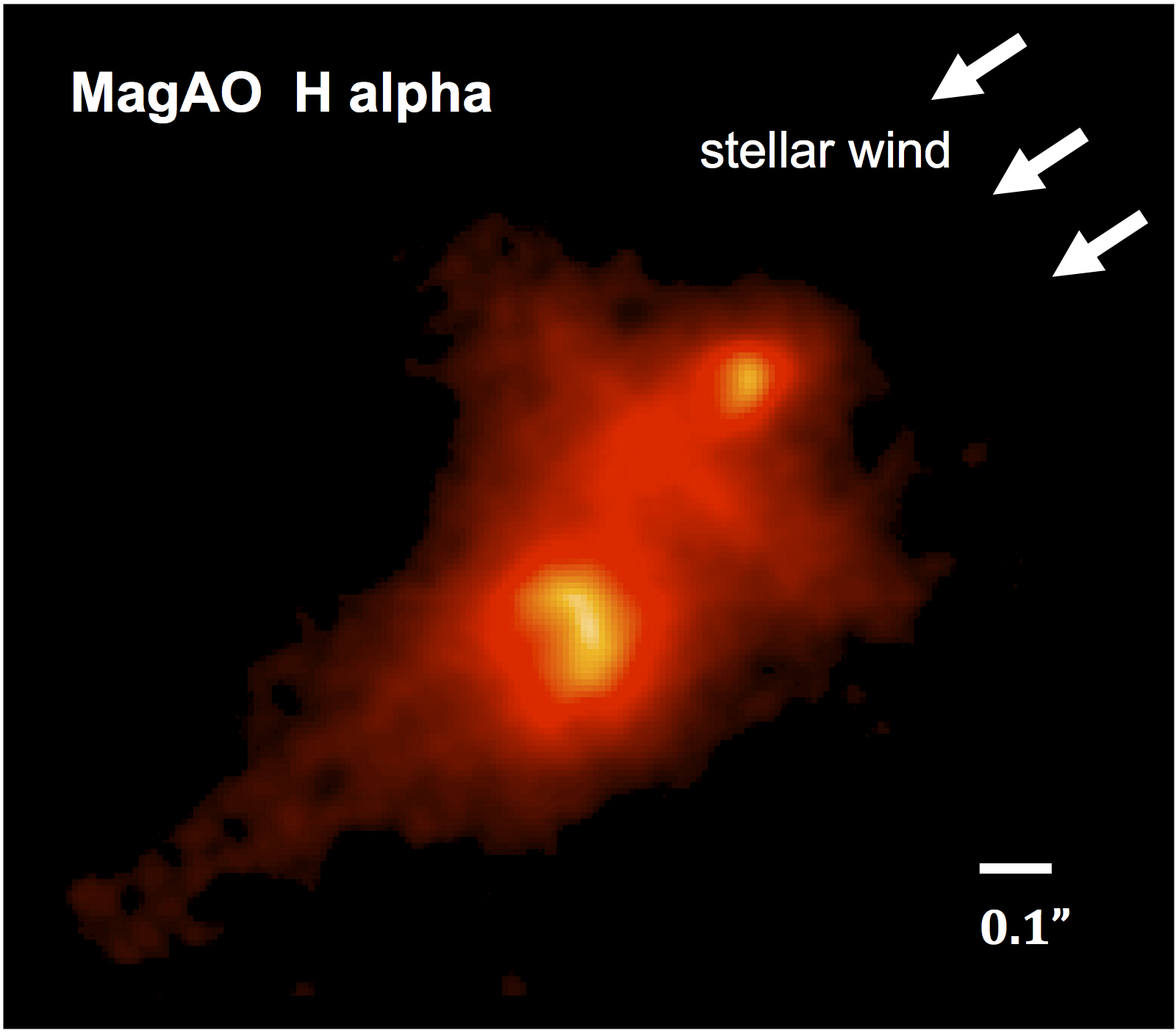Disks of gas and dust around newly born stars, dubbed protoplanetary disks (proplyds), are believed to evolve into planetary systems. Understanding how these disks are affected by strong light/wind from nearby massive stars is crucial to theories of planet formation and evolution. We used MagAO to image the binary proplyd (called LV 1) in the Orion Nebula (M42) at the 653nm hydrogen emission line (H alpha) during the first commissioning run. The spatial resolution is comparable to that of the Hubble Space Telescope (HST), demonstrating the power of AO in visible wavelengths. Our H alpha image clearly shows that the gas of the binary is heavily distorted into “teardrop” shape due to strong UV light and wind from a nearby star, Theta 1 Ori C (See image below). The lack of orbital motion over ~18 years between the stars further suggests that they are of low masses, plausibly a double brown dwarf (the so-called “failed star” since it is not massive enough to initiate hydrogen fusion). This makes LV 1 a rare example of a low mass pair of young disks. Finally, we show that the macroscopic features of these disks may help infer the embedded magnetic field intensity and profile.

For more on LV 1 see:
Wu, Y. L., et al. “High Resolution H alpha Images of the Binary Low-mass Proplyd LV 1 with the Magellan AO System”.
ApJ, 775, 45, 2013 preprint [pdf] arxiv preprint
Abstract: We utilize the new Magellan adaptive optics system (MagAO) to image the binary proplyd LV 1 in the Orion Trapezium at H alpha. This is among the first AO results in visible wavelengths. The H alpha image clearly shows the ionization fronts, the interproplyd shell, and the cometary tails. Our astrometric measurements find no significant relative motion between components over ~18 yr, implying that LV 1 is a low-mass system. We also analyze Large Binocular Telescope AO observations, and find a point source which may be the embedded protostar’s photosphere in the continuum. Converting the H magnitudes to mass, we show that the LV 1 binary may consist of one very-low-mass star with a likely brown dwarf secondary, or even plausibly a double brown dwarf. Finally, the magnetopause of the minor proplyd is estimated to have a radius of 110 AU, consistent with the location of the bow shock seen in H alpha.